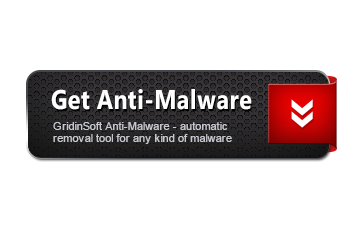The Symmi.80745 is considered dangerous by lots of security experts. When this infection is active, you may notice unwanted processes in Task Manager list. In this case, it is adviced to scan your computer with GridinSoft Anti-Malware.

Gridinsoft Anti-Malware
Removing PC viruses manually may take hours and may damage your PC in the process. We recommend using GridinSoft Anti-Malware for virus removal. Allows to complete scan and cure your PC during the trial period.
What Symmi.80745 virus can do?
- Executable code extraction
- Injection (inter-process)
- Injection (Process Hollowing)
- Enumerates user accounts on the system
- Creates RWX memory
- Reads data out of its own binary image
- Drops a binary and executes it
- HTTP traffic contains suspicious features which may be indicative of malware related traffic
- Creates an excessive number of UDP connection attempts to external IP addresses
- Performs some HTTP requests
- The binary likely contains encrypted or compressed data.
- Looks up the external IP address
- Uses Windows utilities for basic functionality
- Executed a process and injected code into it, probably while unpacking
- Deletes its original binary from disk
- Exhibits behavior characteristic of Cerber ransomware
- Creates or sets a registry key to a long series of bytes, possibly to store a binary or malware config
- Mimics the file times of a Windows system file
- Installs itself for autorun at Windows startup
- Creates a hidden or system file
- EternalBlue behavior
- Attempts to identify installed AV products by installation directory
- Attempts to modify proxy settings
- Creates a copy of itself
- Anomalous binary characteristics
- Uses suspicious command line tools or Windows utilities
Related domains:
ipinfo.io |
How to determine Symmi.80745?
File Info:
crc32: 08DDC0BDmd5: ee4dc12abc331aaabe0d521bd95c400fname: EE4DC12ABC331AAABE0D521BD95C400F.mlwsha1: 7ace21751b0a1fab323104ec0dbd7a84246fb961sha256: 077d30a618cf9861c91922a382ec44f1196222094988e83a6841b8907b5b65e5sha512: abaccd61f79f2bdb6535ed04172fd443750912d56c7b2ed2ae981cda466ac35d199ed97a4008fe3f650ff5066c6bf288394373ac18aacb6d8e51225bf2899249ssdeep: 6144:BfgFQoFekWSsWdu+Uq9i26NKiJE4zMcvW983EV8ucg3ZT2lIc:JtoOSfuVai7z1vWsEVGNlIctype: PE32 executable (GUI) Intel 80386, for MS WindowsVersion Info:
0: [No Data]
Symmi.80745 also known as:
| Bkav | W32.AIDetect.malware1 |
| K7AntiVirus | Trojan ( 0055e3991 ) |
| Elastic | malicious (high confidence) |
| DrWeb | Trojan.Encoder.4939 |
| Cynet | Malicious (score: 100) |
| CAT-QuickHeal | Ransom.Onion.A |
| ALYac | Gen:Variant.Symmi.80745 |
| CrowdStrike | win/malicious_confidence_100% (D) |
| K7GW | Trojan ( 0055e3991 ) |
| Cybereason | malicious.abc331 |
| Cyren | W32/S-ea6bfa10!Eldorado |
| Symantec | Ransom.Cerber |
| ESET-NOD32 | a variant of Win32/Injector.DBQJ |
| APEX | Malicious |
| Avast | Win32:Malware-gen |
| Kaspersky | HEUR:Trojan.Win32.Generic |
| BitDefender | Trojan.NSIS.Androm.10 |
| NANO-Antivirus | Trojan.Win32.Inject.eeybcj |
| MicroWorld-eScan | Trojan.NSIS.Androm.10 |
| Tencent | Malware.Win32.Gencirc.10bd01af |
| Sophos | ML/PE-A |
| Comodo | Malware@#emratub5nwbu |
| BitDefenderTheta | Gen:NN.ZedlaF.34126.dq4@aiBvk4e |
| VIPRE | Trojan.Win32.Generic!BT |
| TrendMicro | Ransom_CERBER.F116H3 |
| McAfee-GW-Edition | BehavesLike.Win32.ObfusRansom.dc |
| FireEye | Generic.mg.ee4dc12abc331aaa |
| Emsisoft | Trojan.NSIS.Androm.10 (B) |
| Avira | HEUR/AGEN.1102535 |
| eGambit | Generic.Malware |
| Microsoft | Ransom:Win32/Cerber |
| Arcabit | Trojan.NSIS.Androm.10 |
| SUPERAntiSpyware | Ransom.Cerber/Variant |
| ZoneAlarm | HEUR:Trojan.Win32.Generic |
| GData | Gen:Variant.Symmi.80745 |
| AhnLab-V3 | Trojan/Win32.Cerber.R184123 |
| McAfee | Generic.afh |
| MAX | malware (ai score=84) |
| Panda | Trj/CI.A |
| TrendMicro-HouseCall | Ransom_CERBER.F116H3 |
| Rising | Trojan.Generic@ML.82 (RDML:eoEKb6vfQ894LwvhVRQQbw) |
| Yandex | Trojan.Injector!aoauC+4+8To |
| Fortinet | W32/Injector.DCKN!tr |
| AVG | Win32:Malware-gen |
| Paloalto | generic.ml |
How to remove Symmi.80745?
- Download and install GridinSoft Anti-Malware.
- Open GridinSoft Anti-Malware and perform a “Standard scan“.
- “Move to quarantine” all items.
- Open “Tools” tab – Press “Reset Browser Settings“.
- Select proper browser and options – Click “Reset”.
- Restart your computer.



Leave a Comment